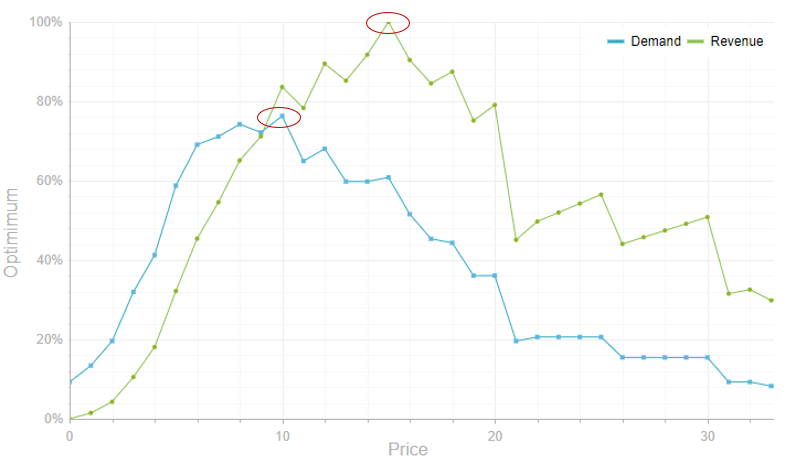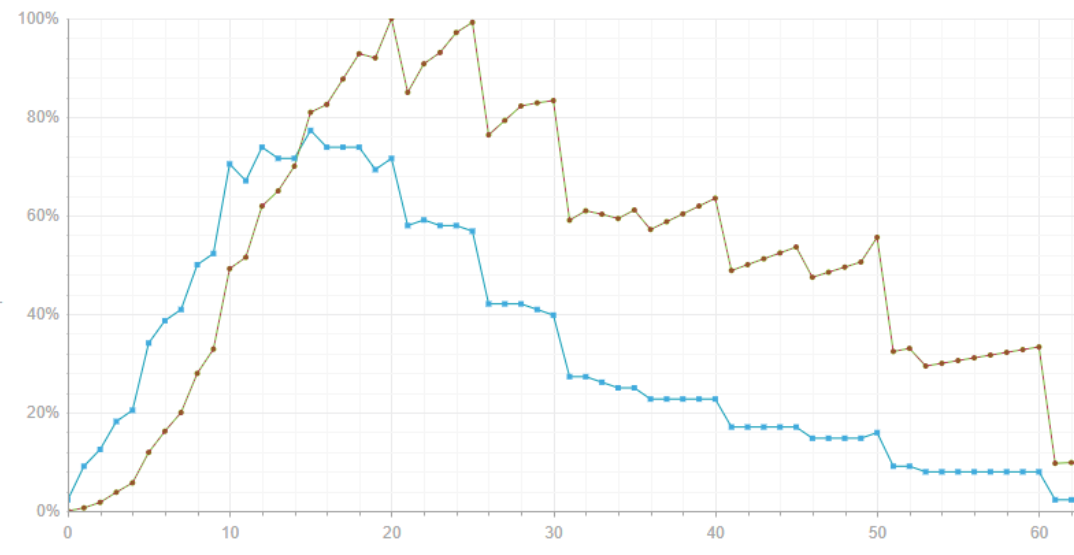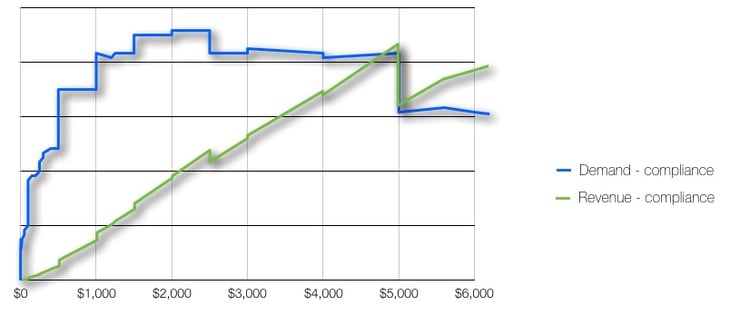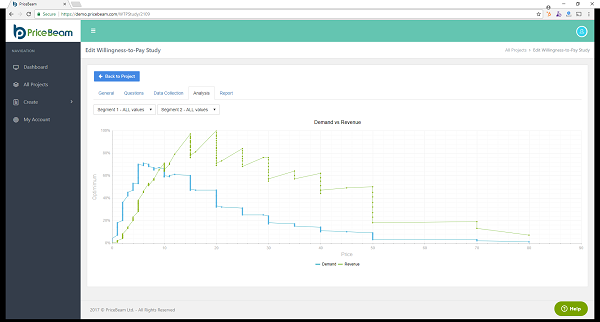Ultimate List of Ideas for Successfully Implementing Price Increases
 PriceBeam
·
13 minute read
PriceBeam
·
13 minute read

Pricing is the strongest profit driver available to management. One percent improvement in price yields much higher operating profit improvement than e.g. one percent improvement in units sold, unit costs or fixed costs. Therefore, price increases should come regularly and at the very least annually. Also, almost all countries and markets have inflation, so as a minimum you should plan price increases in line with inflation. But a true price increase strategy reflects the value perceived by customers and price you as a result can harvest.
This is your guide to how to increase the likelihood of success when making price increases. The list is ever-growing and in constant improvement. Check back frequently or subscribe to updates on the right, to learn about the new ideas we add. If you have suggestions to topics that could go on the list, we would also be very pleased to hear from you.
1. Diagnostics & Insights
1.1 Understanding what the customer wants
Spend the time researching what customers really value and look for in a product. Different customers will look for different benefits that a specific product has to offer. Investing time into pricing research will help finding the optimal price point for a product or service.
1.2 Understanding preferences for certain features or benefits
Taking the time to research what benefits or features are more important and which ones aren't as important to the customers, as opposed to what the internal engineering department likes, will help getting a better idea of how to price the product or service. Adding to that, pricing research can help a business potentially realise that certain features are unnecessary/crucial for new product launched next year.
1.3 Understanding the willingness-to-pay of customers
It is essential for your company to understand what a customer wants and what they are willing to pay for additional features and services. Price research such as PriceBeam's solutions can quickly generate insights like below, where there optimal price is where the revenue curve peaks. Adding to that, price research helps you test new product concepts and what customers want to pay for them.
Adding to that, price research helps you test new product concepts and what customers want to pay for them.
1.4 Identify channels and segments with highest willingness-to-pay
Not all customers across all channels and segments are willing to pay the same for a given product or service. Some value the offering more. Use a segmentation approach to market research and understand where the highest WtP is. This is in turn can be used to engineer the price increases towards those channels and segments, in particular using discount structures.
1.5 Understand the value of features and benefits
Not all customers understand or accept the brilliant thinking taking place in the engineering team or the finance department. In other words, they value different things that the benefits you price for. This is bad in itself, but is also expanded by communication of the wrong benefits. Use price research to understand what benefits and features customers value, and then adjust price communication accordingly.
1.6 Segment the market
In order for price segmentation to be successful, companies need to identify different customer segments and separate them based on factors such as willingness to pay. Businesses can segment their customers into groups such as people who are full-time university students and those who aren't. Depending on how the segment has been defined, those who aren't full-time university students will be willing to pay more for a product that those who are full-time university students because they have more money to spend on a particular product or service.
Using market research, one can determine that different segments have different demand curves and willingness-to-pay

The above example is one output from PriceBeam's Comparative Willingness-to-pay solution. it shows that one segment has a significantly higher willingness-to-pay than the other. Insights like these can be used to derive pricing and product strategies to best meet such market differences.
2. Sizing the price increase
2.1 Assess or re-assess value cases
Why do customers buy from you? what are your advantages against the competition? How are you currently communicating about those value cases? Re-visiting why customers value your offerings means thinking about why they will also accept the price increase. Communicating about those values before, during and after the price increase also means they get re-affirmed in the value perception. Remember, price is what you get from delivering value.
2.2 Set price increase objectives both for individual items and for the entire portfolio
Getting a price increase through is of course step 1. But it doesn't have to be the same increase across the entire product portfolio. Nor across the full customer portfolio for that matter. Successful price increases looks at differences in elasticity or willingness-to-pay and applies differentiated price increases (where possible for administrative and legal reasons). This may mean that if a product is considered to be under-priced (as evidenced by hard data, see below) then it is more likely to be possible to apply an above-average price increase on that product.
2.3 Determining levels of price increase using internal data as well as external data
So how much should you increase prices by? Well, it should certainly be more than zero. Many companies fail to make regular price adjustments to follow inflation, even if market research shows that this is the type of price increase that most customers and industries accept most often. But the real pricing professionals go further. They run internal analysis on historical data to identify patterns in previous price changes and the apparent price elasticity from that. And they run various types of external price research to determine what customers are really willing to pay, thus replacing guesswork. PriceBeam has several world-class types of price research that can help you plan price increases with science, and eliminate the gut feeling and "we always did it this way" approaches. 
Above is an example of pricing research showing the optimum price both from a quantity ("demand" line) and revenue perspective.
2.4 Simulate different scenarios
While many of the steps above should ensure a good starting point, it can be very valuable to simulate different price increase scenarios. What happens when you differentiate the price increase against specific products or channels? Or in B2B, look at differentiated discounts so that the net net price varies across customers. In most situations, this optimizes prices, as not all customers are willing to pay the same price for the same product, thus by differentiating where possible, according to price elasticity or willingness-to-pay, you optimize the overall price. PriceBeam's partners, Stratinis, have a great software tool that does price increase simulations out of the box.
3. Product Features, Benefits, Research & Development
3.1 Find the right price
Keeping the different customer segments in mind, it is key to finding the right price for each. At this stage one of the key things to remember is that price is what you get for value delivered to the customer. Price is not costs plus X percent. Again, it sounds simple but this is often where many companies fail, especially if the Finance department wields too much power over the pricing process.
The right price is what a given customer segment is willing to pay for the new product, in the configuration that this segment values the most. With the help of pricing research, such as PriceBeam's solutions, you can get solid and scientific insights that will help you arrive at such prices:

In the screen shot you can see two curves that show the demand for a given product in certain segments. The X-axis is the price and where the line reaches its highest point on the Y-axis is where the willingness-to-pay generates the highest potential revenue. With this kind of insights can you identify willingness-to-pay for a single segment or more. Using PriceBeam's comparative WtP project you can also compare that with existing products or competitive products, to better understand what the right price should be.
3.2 Check Pricing Boundaries
While the best price for a new product almost never has anything to do with costs, it can be healthy to keep some boundaries in mind when launching the new product. If Step #2 above gives you the correct Target price, you should also look at what boundaries the price can/should move within.
Identify the Price Ceiling
To find your price ceiling, you need to understand what value your product provides to your customer. Are they saving money by using your product or driving more business? Are they increasing brand equity? Is it saving them time or making processes more convenient? While money saved and revenue gained from using your product can be measured fairly easily, measuring its effects on convenience and brand equity requires you to use market research methods such as conjoint analysis, Van Westendorp or perceptual mapping.
Identify the Price Floor
The price floor is the lowest price you can charge without making a loss. That is, what is the lowest price you can charge without the cost associated with your product are higher than your price? You may think you know your cost, but many companies actually get their true cost wrong. Often, they fail to account for R&D and the full cost of building your brand’s reputation. If you’re speaking at a conference to promote thought leadership, this comes at a cost, too! You spend time that you could have spent elsewhere and may be sharing knowledge that you could have sold to the audience in a whitepaper or a webinar. Your price floor must account for all costs associated with your product, also those that don’t show on your income statement.
3.3 Plan for the Product Lifecycle
Most products and services are launched at a given price as well as time. They may be completely new and innovative and bring benefits to customers that are unparalleled at the time. But as time goes by, competition intensifies or customers no longer put the same value on the product and its features. A successful product launch takes this into consideration from before the launch rather than responding to changes with adhoc or desperate pricing. What should be the price when you launch? Should the price change over the first 12 months? Is there already a life expectancy, and if so what kind of pricing should be used when the product reaches its end-of-life? Typically at the end there are two types of approaches: a) increase the price of the old product substantially to discourage further purchases / encourage switches to its newer replacement b) lower the price to get rid of stock and reward customers who still buy it.
The key point is to plan for how the price should move from start to finish. This doesn't mean that you can fully predict the future, nor should you, but product launches that start low and then suddenly get a 50% price increase are rarely very successful. Nor are launches at e.g. 100 that then within 6 months can be bought at 25. The early adopters who bought at 100 find themselves misled.
If you do plan to alter pricing considerably over the life time of the product, then try to do this through product variants instead. E.g. adding features and only charge the higher price for those additional features. Or offer a full version, a premium version and a simplified version and then do the discounting on the simplified version.
4. Competitors
4.1 Staying competitive
Price research is key in order to keep an eye on what the competitors are up to regarding changes in the prices of their products, if they have implemented new features. Investing in price research can help the business prepare for situations in which competitors are successfully implementing new ideas to attract customers.
4.2 Analysing competitors' products:
While this relates to staying competitive, taking the time to see what features work for competitors and which ones don't is vital. By analysing what has worked and what hasn't worked for competitors, your can use that information to really get a better grasp of what the customer base wants and needs, helping you get ahead of the competition.
5. Brand and Business Impact
5.1 Increases in price lead to increases in client quality
As mentioned previously, price increases will drive away disloyal customers desperately hunting for a discount. When those customers leave, a business will be exposed to their loyal, higher-quality customers as well as attracting other customers who value what that business has to offer. These customers, who are also willing to pay more, are more likely to stay loyal and have reasonable expectations for a business. Because of the loyalty and reasonable expectations, these customers are easier to work with and easier to satisfy. They swear by "you get what you pay for" and will pay more for a business' product or service, which is an added bonus. Their willingness to invest into an improvement of quality should encourage businesses to warm to the idea of a price increase more.
5.2 Customers will value what the brand has to offer more
Companies that are willing to do anything for their customers are putting themselves in a position where the customer controls the relationship. Businesses that choose to stick to their price increase will lead to customers respecting what they have to offer more. Firms that have clear and defined products and services also do well at earning the respect of customers. By distancing themselves away from customers always on the lookout for a discount, businesses are thus able to shift how their customers perceive them. That shift in customer perception means that the business has all the momentum and are able to decide what value they want to provide to their customers.
6. Internal Communication
6.1 Internal value communication and training
A sales person who is convinced that the price she is communicating is fair and acceptable, is a far superior sales person to the one who has internal (and sometimes external) doubts about the value delivered versus the price charged. So equipping the sales team with pricing research and actual facts about what the market values can make a tremendous difference in getting pricing well communicated, and in the end the ability to achieve higher prices.
6.2 Build an internal value feedback loop
In case there are issues with perceived value (you will find out under #1), it is better to get a handle on it up front and not leave a lingering feeling in the organization of value-delivery problems. Successful organizations make sure that value feedback is transported quickly and effectively back to the decision makers, and the product offering is improved in order to deliver the value that customers value.
6.3 Pricing is Change. Apply Change Management.
Instead of just putting up a price increase, and then have it shot down, make a plan for how to increase prices over time. This includes building value arguments, communicate both internally and externally, and in case of bigger changes make a plan for how to achieve the goal either in multiple steps, or by changing the price structure/price dimensions so the effective increase appears lower than it actually becomes. Changes in pricing dimensions is a key driver of achieving real price improvements, without upsetting the customers (too much).
6.4 Managerial courage.
It is not uncommon that "customers will not like price increases" stand in the way of 20, 30 or even 40% price improvement potential. But a good rule of thumb is, that unless at least 20% of your customer base is strongly against a price increase, then your current price is certainly too low. Pricing is taboo in some organizations but by making an elaborate plan for a) understanding the customers through research b) improving the pricing mechanism (price dimensions), c) managing internal communication and d) managing the external communication, then it is almost ALWAYS possible to improve prices without upsetting customers.
7. External Communication
7.1 External communication
Pricing research will help businesses better communicate those changes in price to their customers. By understanding the needs of the customer more, one is more likely to communicate those changes effectively without driving them away from your business.
7.2 Value communication
When launching new products, or changing existing product concepts, it is often overlooked how to communicate well about the pricing side. What concepts do customers value? When are they willing to pay a premium versus what type of feature arguments simply get ignored? Using price research such as PriceBeam's Comparative Willingness-to-Pay research allows you to test different concepts and product ideas against each other, and understand what resonates best with the customers.
7.3 Maintain an open line of communication with customers
Businesses that are worried that a price increase will be poorly received need to take the time to develop a plan on how to introduce this new price to their customers. By listening to what customers have to say and knowing how to communicate their new value proposition, firms will find that customers will warm to the new price of a beloved product or service. Companies should listen to what their customers have to say, particularly if there are complaints that a company can use to improve their product. Even though price increases are tough, it is vital that businesses never give up and see their proposed increase through. Firms will also find that a price increase will be well-received if they know how to justify that price increase and if they know they are justifying that price increase based on what their customers want. Keeping an open line of communication with customers also allows for trust between customers and firms to remain intact.
7.4 Determination is key
Now that the business understands what they are working towards, it is vital that the business stays determined when it comes to implementing their proposed price increase. A business needs to stay determined because a large part of the reason that business operates is to constantly develop their products or services; the business wants to develop a product that is superior to what their competitors offer. Developing a great product means that a business will attain the coveted status of industry leader, meaning that more customers will flock to them as a result. A firm must think about all the benefits a price increase will bring to them if they execute the price increase well.
8. Sales team
8.1 Fall-back options and revenue control
Of course you might find resistance to the price increase among existing customers, and in some situations it may even be necessary to have a fall-back option for those specific customers. But try to make it as difficult as absolutely possible for sales people to invoke the fall-back option. One example was a very well-known FMCG/CPG company who a few years back introduced a 5% price increase; an increase that the sales people didn't buy into, and therefore were discounting away. The story went something along the lines of: "well, Mr Customer, I know we communicated a 5% increase, but for you I can make it go away by offering a 5% discount". The net effect: they only achieved a 0.5% effective increase at the pocket price level after all discounts. Successful pricing teams apply revenue control mechanisms to make this more difficult. In smaller organizations or companies with few customers or products, this can be achieved by simply making the fall-back option something that requires CXO approval. In larger organizations, or in businesses with many customers/products/sales people, it can be done effectively with a revenue control software tool, where each deal is simulated, and deals below certain internal thresholds must go through one or more approval steps.
8.2 Staff training
The conviction that your team brings to the (negotiation) table when it comes to price increases makes a huge difference in how successful the price increase ends up being. Make sure that the team both understands and sees the price increase as fair. Equip them with the overall value cases, and train them in argumentation techniques to justify and defend the price increase. It makes all the difference in the world. The worst cases of price increases are those where the price increase is just communicated and the sales people don't have the tools to justify and defend them.
9. Tactical mechanics
9.1 Make price adjustments routine:
companies who rarely increase prices teach the customers that this is the accepted norm. Just like they teach the sales team that prices are not (very) important. In other words it creates a company culture of not pursuing profits. On the other side, companies who make regular price adjustments (read: increases), or who implement new pricing dimensions along which they can reap additional profits, teach both the customers and the internal team that prices are important for the company's overall profits. The different between best in class and worst can easily be 30-40 percentage points over 3-5 years.
10. International Price Increases
10.1 Understand willingness-to-pay in each market
knowledge and insights into what customers are willing to pay, and what features they value is fundamental. Equipped with that knowledge, you can plan pricing as well as marketing communication. Without it, you risk simply applying a one-size-fits-all approach, at best foregoing opportunities to price higher (where WtP is high) or at worst losing sales because your price is considered too high (where WtP is lower). Successful businesses understand what their customers value and build more value along those lines.
10.2 Continuously monitor (net) prices across countries
Prices ARE different in most countries and in most industries, despite various harmonization attempts by international customers. This is by virtue of #1 above a good thing, as price differentiation at an international level is a reflection of differences in willingness-to-pay. But understanding how your prices move and develop across countries is still key in order to understand potential trading risks (goods flowing from low-priced countries to high-priced countries) as well as knowing the basis to implement price increases or indeed new product launches from. Most companies launch new products as an improvement to something existing. What is the price of that existing item?
10.3 Create an internal language for discussing prices across countries and markets
Being able to discuss international pricing internally is a necessity when dealing with international prices and international launches. If the manager in Germany has a different understanding of "Net Price" or "Price Promotion" than her colleague in USA, then international managers will find themselves in a difficult situation when launching new products, setting target prices or managing global floor prices to ensure minimum profitability. Note that this applies to internal language and in now way to how you communicate with customers or the market in general. External language can actually help maintain price differences if it is sufficiently incomparable or muddled (as long as it doesn't lead to customer resentment).



